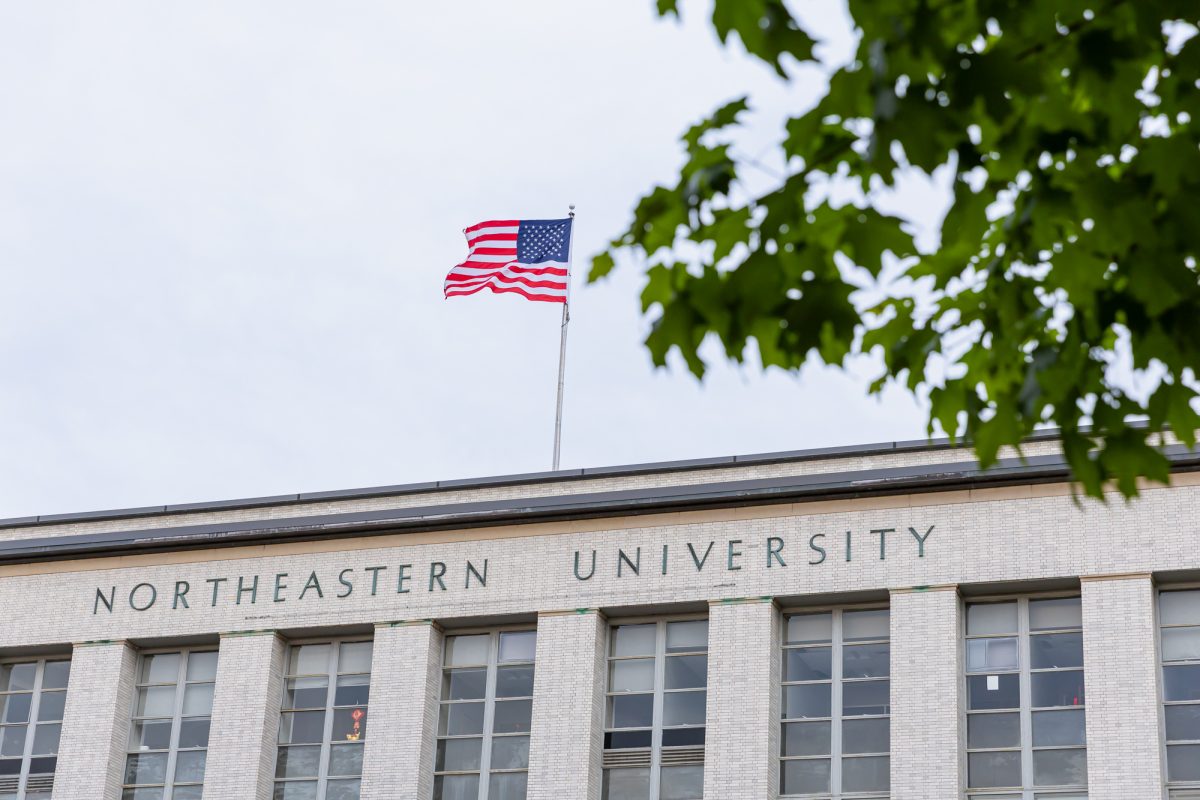By Ryan Chaffin, News Correspondent
Douglas Blackmon’s illuminating book, “Slavery by Another Name: The Re-Enslavement of Black Americans from the Civil War to World War II,” has been honored with a New York Times Bestseller listing and a Pulitzer Prize. On Friday, it received another, humbler honor: the author made an appearance in Northeastern’s Raytheon Amphitheater, where he spoke about his novel and invited in the beginnings of what could prove to be an expansive discussion about race among interested students and faculty.
Blackmon in person is guilty of protracted yet eloquent description, as he takes listeners through rarely dog-eared pages of history to arrive at conclusions that still elicit a moment of profound silence.
And after a decade of research on race, it seemed natural that Blackmon would have a lot to say.
There have always been “missing” periods in history, especially in public education, Blackmon said. He noted the time between the 1860s and 1890s is one such period. It was a period of high-spirited reform, with white and black candidates running together for public offices, with bills and statues passed that could have created a very different future for African-Americans in the South. But at the same time, there was a coordinated effort among southern states to curtail such reform.
The Confederacy lost the Civil War on its own ground, but still had remnants of the old South even during the Reconstruction era. Over the decade following the Civil War, southern states passed a series of laws that essentially “criminalized black life,” Blackmon said. Laws were never race-specific, but actual arrests and convictions were overwhelmingly lopsided against black men and women. To compound the issue, most of the new laws were arbitrary and nominal. Black people could be jailed for “speaking loudly in the presence of a white woman,” for “selling agricultural produce after dark,” or for a dozen other riffs on the broad theme of “vagrancy,” Blackmon said. Black men were arrested in groups of 10-20, convicted en masse, and delivered into the hands of corporate businessmen who put them to work in mines and lumberyards. Businessmen paid the state officials for the labor and treated forced punitive labor as business and the prisoners as a commodity. It was almost like a repetition of history, when slavery was legal, Blackmon said.
There was a law prohibiting farm workers from “seeking work from another employer without the written permission of their current employer.” Tens of thousands of black men were arrested, for trying to escape their often brutal working conditions, and simply carted off to work a few years as unofficial slaves, after which they would have to return to their previous employer and face further vengeance.
Sharecropping is a topic most students are educated on, but the unofficial slavery system is not. Blackmon mentioned, for half a century after its inception, leaders in the American government refused to educate anyone about the atrocities in the South — including themselves. In the 1930s, however, a freshly re-inaugurated Franklin D. Roosevelt and his cabinet had to face a problem that was, for once, external: could the Japanese make overtures to southern African-Americans, offering them something the states never delivered on: actual freedom, freedom without hypocrisy, deliverance?
The Roosevelt administration did act, but perhaps it was too late. Blackmon said the administration passed federal anti-lynching laws that cut down on some of the race violence nationwide, and members of the government began to pay attention to the constant reports of slavery from certain areas in the south. In 1943, a man and his daughter were sent to prison in a deliberate show trial for keeping a black man as a slave for 15 years.
During the event, Blackmon called this last case the “legal, technical end to slavery.” In his question-and-answer period, the author made it clear that injustice, while less awful than before, is not a won battle; for in any crusade to aid the disenfranchised, there will always be enemies willing to block any reform, and bystanders unwilling to stand up for what is right.








